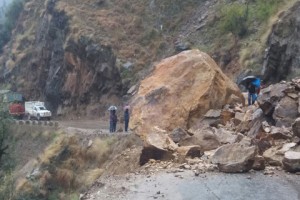1st US-Japan Workshop Enabling Global Collaborations in Big Data Research
J.W. Marriott Hotel, Buckhead, Atlanta, GA, USA June 5 – 6, 2017
Workshop Objective
This workshop will bring together researchers from around the world to discuss experiences, challenges, and opportunities in transnational and international collaborative research on information technology (IT) and IT-supported applications, with focus on active collaborations between the United States (U.S.) and Japan. The workshop will provide opportunities for participants to interact directly and promote collaborative research activities. The collaboration is expected to achieve scientific knowledge that would be difficult to obtain individually.
Workshop attendance will be by invitation only, following response to this call as outlined below. Prospective attendees are expected to be investigators on funded research projects, and should submit papers or whitepaper for consideration by the program committee. Workshop organizers are requesting funding from NSF and JST to support partially the travel costs and registration fees of invited attendees from the U.S. and Japan. Principal Investigators of projects in relevant NSF and JST programs are strongly encouraged to apply. Additionally, early career researchers and underrepresented minorities are encouraged to apply.
Priority Research Topics
Topics of interest for collaboration include, but are not limited to:
- Big Data Fundamental Technologies and Applications: novel techniques, methodologies, and technologies in computer science, statistics, computational science, and mathematics, together with innovative applications in domain science, which may include, for example, disaster management.
- Smart and Connected Communities (SCC): strongly interdisciplinary, integrative research that will improve understanding of smart and connected communities and lead to discoveries that enable sustainable change to enhance community functioning.
- Cyber-Physical Systems (CPS) and Internet of Things (IoT): system science needed to engineer complex, reliable cyber-physical systems that people can use, interact with, and depend upon, namely the cross-cutting fundamental scientific and engineering principles that underpin the integration of cyber and physical elements across all application sectors.
- Artificial Intelligence and Machine Learning: research enabling computational understanding and modeling of intelligence in complex, realistic contexts, or more generally, processing and functionality to address data of unprecedented scale, complexity, heterogeneity, etc.
Agenda
Please find the agenda here. [download id=”22″]
White Papers
These whitepapers are being distributed for open access as part of the US-Japan Workshop, co-located with 2017 ICDCS, Atlanta, GA. For citations to work described in the whitepapers, please contact the authors.
[download id=”20″]
Regular Papers
These regular papers are a part of the 2017 IEEE 37th International Conference on Distributed Computing Systems Workshops (ICDCSW) Proceedings.
[download id=”21″]
Organizing Committee
Workshop Organizers
Calton Pu, Georgia Institute of Technology, USA
Masaru Kitsuregawa, University of Tokyo, Japan
Program Committee
Jose Fortes, University of Florida, USA
Etsuya Shibayama, University of Tokyo, Japan
Qingyang Wang, Louisiana State University, USA


